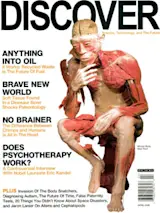Scientists reeling from the revelation that South Korean researcher Hwang Woo Suk's stem cell work was fraudulent are scrambling to revive the golden promise of the field and make up for lost time. "The sad thing is that thousands of people may die because we lost two years of legitimate research while the South Koreans played their games," says Robert Lanza of Advanced Cell Technology in Worcester, Massachusetts.
Hwang claimed to have perfected somatic cell nuclear transplant, a procedure in which genetic material is removed from a donated egg and replaced with DNA from the patient to create cloned cells that could regenerate diseased tissues or organs. The technique is appealing because the cloned cells would be genetically identical to the patient's own and so should not be rejected. After Hwang's papers were published, Advanced Cell Technology had to suspend its research in the area; funding had dried up, and ...















